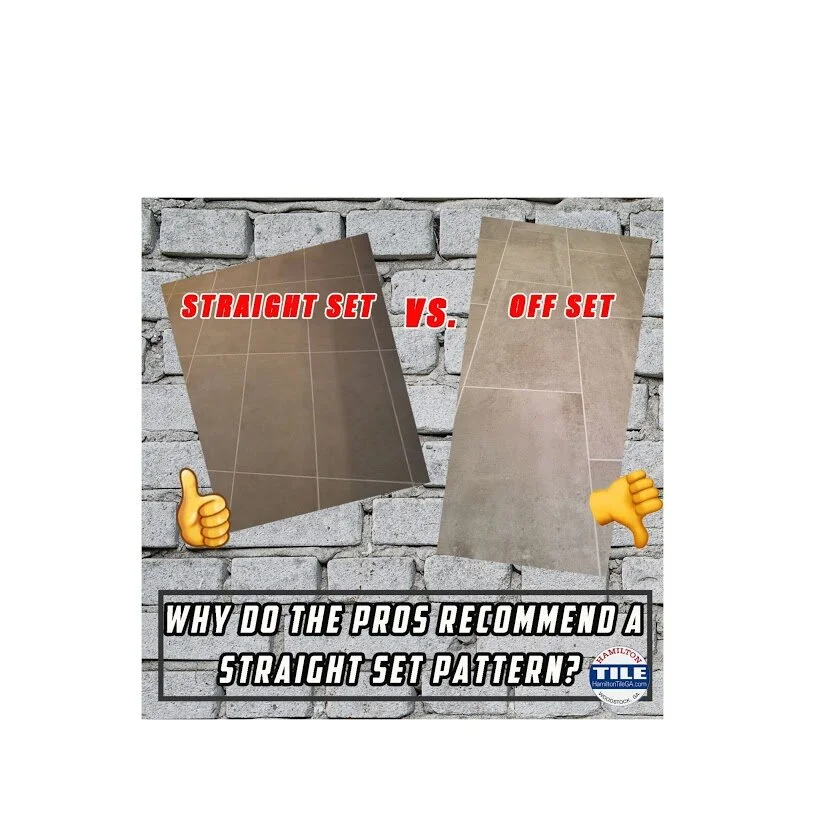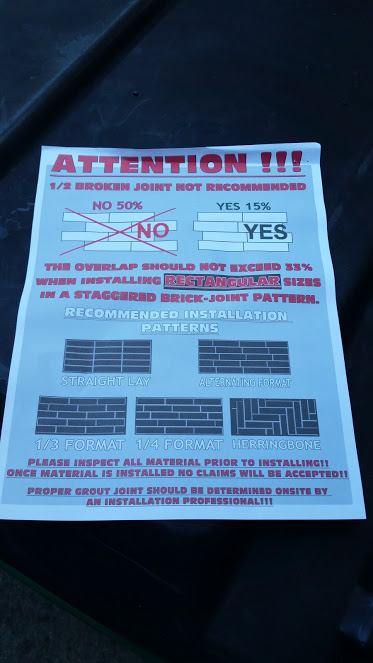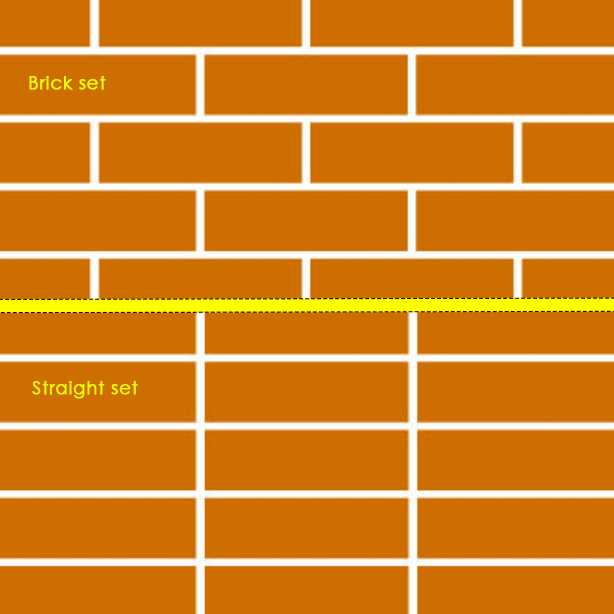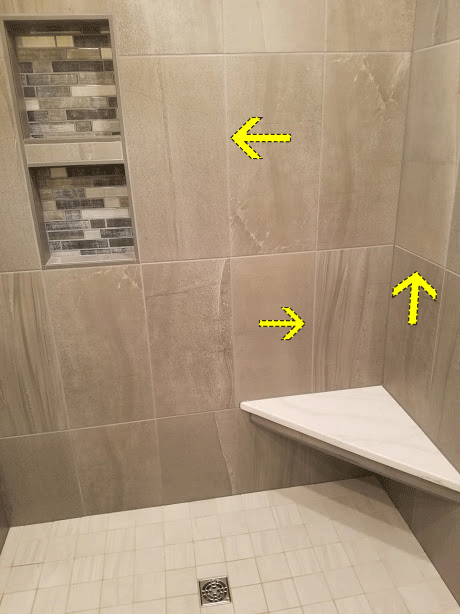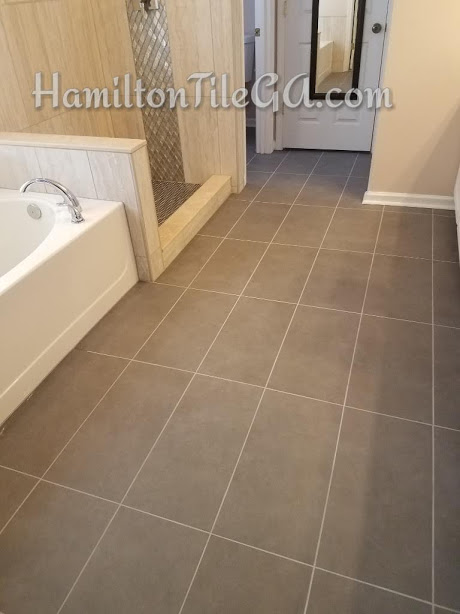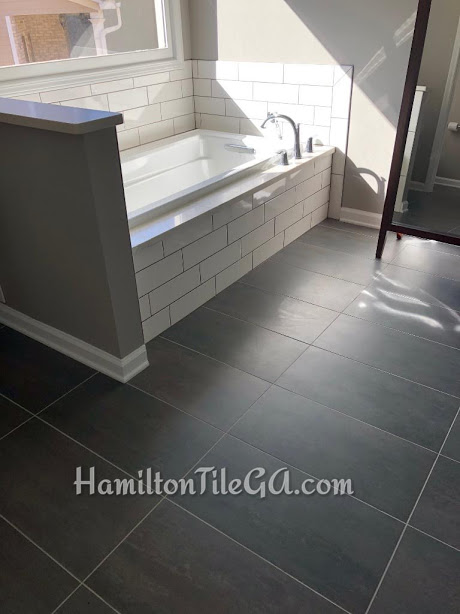Making a decision about the lay out of your tile can be a very difficult one. Almost as difficult as actually choosing the tile!
Designers and homeowners are usually aesthetically minded, but as installers we think of tile lay out in a completely different way, which I’m writing about in today’s blog post.
In a perfect situation, the designer/homeowner collaborates with the tile guy and takes their perspective seriously. They’ll mix their worldviews to produce something that looks, functions AND lasts. This doesn’t always happen because lay out is often mistakenly seen as not making a difference to the over all finish. The fact is, lay out is quite important in relation to the finished product.
So important, that manufacturers will label their products to inform the installer on how to put it in. Labels like this one generally shouldn’t be ignored:
Be sure to check manufacturer recommendation before installing your new tile. PRO TIP: I can tell if the tile I have is from a legitimate, upstanding manufacturer based on whether or not they have installation recommendations on the boxes of tile.
Below are the two most common tile patterns, and many of the other patterns are variations of “brick set” or “offset” lay outs.
The question:
Why do we consistently recommend a straight pattern over an offset pattern?
Here are my four reasons:
Less potential for small pieces
As a tile installer there is nothing more unsightly than small pieces of tile. As CTI certified installers, our training advises us to never have any piece smaller than a half, but when we are doing large projects with patterns that are supposed to ‘mirror’ or ‘wrap’ sometimes it’s impossible.
“But Ben, just shift the pattern.” Easy for you to say! Like I haven’t thought of that! :P
When shifting a pattern to try to reduce the instance of small pieces, the small piece will manifest itself somewhere else! Frustrating!
In a perfect world, the space you will be tiling is designed and built to accommodate the tile size and pattern. I’m talking about some EXTREME planning. It never happens like that.
When we’re putting in a ‘straight set’ pattern, we really have more flexibility in minimizing any small pieces on the project. Below is a perfect example of what I am talking about:
Nothing bugs an installer more than small pieces. But with a bathroom like this, with tile wrapped around the entire space (wainscoting) if you shift the pattern to make bigger pieces in one area, the problem of a small piece manifests itself somewhere else! Problem solves itself with a straight set pattern!
Compare the picture above to this ‘straight set’ bathroom below. Same size tile. Same bathroom lay out with wainscoting. There wasn’t a small cut in this entire bathroom. Full pieces in the corners. Full pieces around the inset box.
2. Less wasted tile.
Most tile jobs require about 20% waste. Unless we’re doing an offset pattern, we’ll get significantly more so we don’t fall short. The first bathroom with the horizontal offset pattern above, we had practically no leftover tile at the end of the job. We had to strategically use every tile. As a homeowner you may think that is great, but for a tile installer it is a nerve racking experience, and not having enough tile has the possibility of throwing the schedule of a job way off.
The straight set tile job from the photos above had plenty of extra with no danger of falling short. Why?
When an installer is doing an offset pattern sometimes a large portion of cut tile cannot be used anywhere else. That increases the waste considerably.
3. 'Straight set’ is a more contemporary look.
When I look at installer photos from across the pond I see the Europeans doing more ‘straight set’. What I notice when installing tile, there is definitely a generation gap between the people who want an ‘offset pattern’ and those that want a ‘straight pattern’. A ‘straight pattern’ will automatically make your space seem more modern, whereas an ‘offset pattern’ will make your space more traditional. Looking to be young and hip? Go straight set.
And most importantly:
4. ‘Straight set” is more likely to produce a flatter finish.
All porcelain tile is slightly warped. No size has a more pronounced warp than a 12”x24” porcelain tile. They are the main offender. Look around at any commercial space and you’ll see brick set 12x24” that look horrendous. That’s the reason most manufacturers don’t recommend brick set with that size tile. When you brick set a tile of that size, the middle is warped up and the edges are warped down, so where three tile come together there will be lips. An example below, you can see the lips clearly:
There are ways to alleviate some of these issues, but straight setting is the most straight forward.
Some of the lippage problem can be taken care of with leveling systems, like Lev-Tech or MLT but they are not a fix all. Leveling systems add another level of technicality to any install. Cost aware people should think ‘straight set’!
The built in warpage of tile is the number one issue with the material. The higher quality tile has less warp, but every tile has some.
These two floors could not be done in an ‘offset pattern’ Even a 1/3rd offset was proving to be problematic.
Let me rephrase that, these floors could have been done with an offset pattern, but they would have had unsightly lips. “Just be a better tile installer!” Ultimately, we are only as good as the material provided.
We spoke to the customer and straight stacked the floor and they both came out perfectly flat, because instead of the warps working against each other, we configured them in a lay out so that the warped tile worked with each other.
A flat, lip free install took precedence over an arbitrary aesthetic preference, as it should.
The moral of the story is that you increase your probability for success by conferencing with your installer prior to installation and seeing what the best option for lay out will be. I’m a big fan of mock-ups. Have a mock up done for comparison and make a decision from the perspective of ‘this tile is forever’. Be open to change, based on the limitations of the material.

